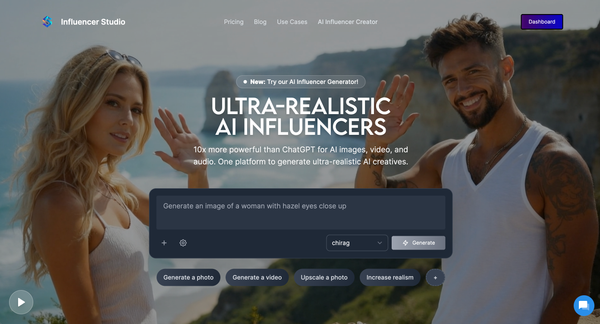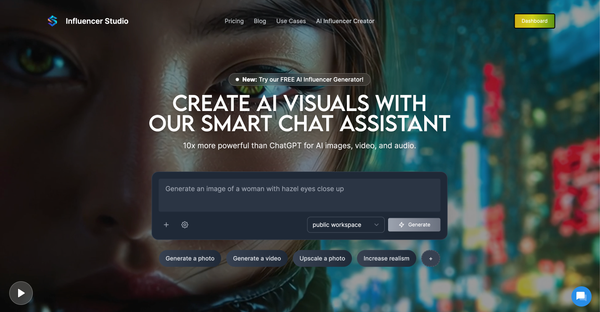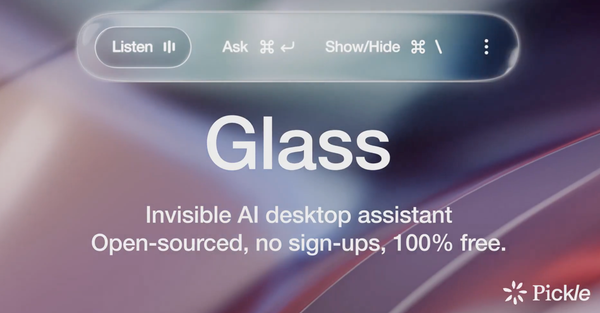How 24-Year-Old Brian Wong Went from Being Unemployed to CEO Of a Million Dollar Company

In this interview, you’ll find out how one 24-year-old went from being unemployed to being the CEO of a multi-million dollar company in a very short-time. Plus he’ll dish on how to get investment for your company.
Being unemployed doesn’t mean you’re out of the game. It just means you have more time to come up with a great idea, which is exactly what happened to a young hustler named Brian Wong.
“Create your own luck.”
That’s the straightforward advice Brian Wong would tell other young entrepreneurs looking to create their own businesses. As the CEO of Kiip, he devised a simple idea to provide a real reward to consumers who used an app or completed an in-game task, which has been a game changer for the advertising and brand industry.
As a marketing platform that’s paying off for its founder, Kiip has generated over $15 million in investments up to date and continues to capitalize on creating “moments” between users and advertisers.
Brian tells HyperLush how he turned a concept into a real business by networking and partnering up with the right people as well as giving us the key ingredients to becoming a successful entrepreneur.
[et_bloom_locked optin_id=”optin_4″]
Download your free e-book here.
[/et_bloom_locked]
Can you tell us about your typical day? What does a founder/entrepreneur do?
I usually get 5 hours of sleep during the weekdays and am up by 6:30am. Today, I had a few conference calls at home, then met with the President of the University of British Columbia, which is where I went, regarding the creation of alumni initiatives to bring in entrepreneurs into the business program. Afterwards, I took an Uber ride to our office to meet with the President of Omnicom Digital who is a client. Afterwards, I go through our daily in-house meetings and calls on investor relations, clients and internal operations such as new hires.
What’s your process of hiring and how many employees does Kiip have?
We have 75 employees across the country, San Francisco, New York, Chicago, and Los Angeles. We’re looking for people with passion. Passion because it’s very difficult to teach. I’d take passion over intelligence, but both would be preferable. A lot of things can be learned, such as skills, but passion is innate. The second thing I look for or ask is, “Are you a capable teacher?” Are you able to explain things? Can you break down complex problems and concepts into simple components and are you willing to share? Is the person humble? This is the type of individual we want.
How did you come up with the name Kiip?
It’s a pun on “Keep it Real,” “Keep Going,” “It’s A Keeper,” and “Keep It Up.” The name was created because it’s easy to pronounce and describes why we work and why we do it well. Once someone hears the word, they remember it.
How did your background help you create Kiip?
I was a marketing major in Business school. My background was design, brand, advertising and psychology which helped me create Kiip. I also learned how to design when I was 11 years old, using Photoshop as well as taking tutorials online. Since I was a huge gamer playing Counter Strike, my friends and I ended up designing forum signatures for its members. That blossomed into a small side business which helped to pay for college tuition and a few other fun things.
Coming up with the business model of Kiip, was there a company that did what you guys do now?
In an ancillary way, rewards based companies and loyalty mechanisms have been around forever. But we were the first to merge it with advertising, which made us unique and garnered us a lot of attention.
Kiip has generated a lot of media attention and you’ve received over $15 million in investments. For those entrepreneurs without a network, could cold calling investors work?
In the past I’ve cold emailed influencers and investors for general meetings by guessing their email addresses. I’d use one guessed email address for the TO line and the other guesses in the BCC and wait for a response. Luckily, Fred Wilson, a VC in New York, agreed to a 15 minute meeting with me at his office. Using his name, I was also able to secure other meetings like Alex Blum at KickApps. Even when I got a job at Digg, I cold emailed executives there and even though I didn’t get a meeting with that particular person, he referred me to someone else at the company, which got me hired.*
In regards to actual investor interest, I highly doubt that a cold contact would yield an investment straight up. If it does, then there’s some action happening in the background. Someone usually relays to the investor something very positive about you or got them hyped up about your business or product.
What is the process of getting investors? Have firms ever turned you down?
It’s serendipity. For Kiip, I met with Sam Purtill, a former engineer at YouNoodle, and told him about my idea. He was someone I knew when I was at Digg and he introduced me to Adam D’Augelli at True Ventures, who he thought would have some interest. I met with Adam at a cafe and got to know him, briefly discussing the idea. Two days later, he invited me to a partners meeting where I was supposed to pitch. Three days later, they gave me an offer.*
Have firms turned us down? We’ve had tons of no’s. I talk to upwards of 20-30 investors and typically that’s the number for every investment round. All you need is that one yes which is the most important. That yes leads to another yes and then you have two yes’ competing against each other.
How did you convince brands to work with you and your new company?
We made it very simple for them. We are trying to fix a universal problem in a super easy way. If you tell someone you’re going to fix traffic, then everyone understands what that problem is. The universal problem in advertising is that no one ever clicks on banner ads on purpose. So it was easy for us to explain our solution. Brands were eager to attempt solutions to make it look like they’re the ones fixing bad traffic.
Since Kiip is a forerunner in creating rewards based advertising, has there been new competition to deal with?
Everyone has taken a piece of what we’ve done and incorporated it into their own models to see what works. First would be gaming mechanics and reward mechanics, which a lot of advertising companies have tried to utilize. The second is the verbiage of “moment.” We talk about the “moment” quite a bit since it is a big part of our business model and brands are talking about it. Google released their new marketing platform for their ad product, calling it “micro moments.” Moments are starting to become more appealing and we realize that. I think it’s good we’re the leading edge of that and that it’s attributable to us, at least to people in the industry. We will continue to do that and focus on our strengths which is still “moments” with mobile apps and connected devices.
How do you separate yourselves from the competition?
You have to earn the right to be a competitor but it’s good to have competition. We want to be more human-like in our approach. Think about every advertising model that’s been used in the past. A lot of it is built on how many ads of the brand are shown, shoving as many down your throat as possible. Most ad companies look at the impressions but none of them care if you care about the brand. We care if you’ve engaged with the reward and if you care about the brand and once you’ve engaged with the brand, we won’t ever show you that reward from that brand again. That becomes a core part of the success metrics of what we look at.
Differentiation for us comes in the form we have this model that is more aligned to how consumers actually behave. We’re very logical and tactical about it.
What is your business model and do your consumers validate their rewards? What percentage of them do?
We don’t pay for the rewards so our incentives are not about saving on the cost of the reward. We charge when users claim it and it doesn’t matter if they use it or not. Our current average claim rate is 10%. Out of that number, users will choose to validate in stores or not, which is totally up to them as we don’t get remunerated either way. Our model goes by the cost per engagement basis.
Is there consumer fatigue with your users and the rewards they receive?
We chose a serendipitous model where you don’t actually know the type of reward and when you’re going to get it. So consumers don’t scale up. The typical reward schedule is if you get to a certain level, you get something in return. We jump around so there’s no fixed schedule and no value to peg on it, keeping things interesting and fresh so that people don’t get fatigued. But it drives consumers crazy. It’s a slot machine mechanic bundled into an advertising product. Classic variable rewards.
Did you guys have a game plan from the beginning?
Like most entrepreneurs we had an immediate goal of just trying to make it work, and not necessarily about the IPO. Then when you actually have a company, we work on the next steps with people around you who have done this before. You learn something new and it’s fun. I had a low bar from the beginning, which was not to be unemployed, because that’s where I was before Kiip. Now, the bar is set higher and higher. It’s less about me and more about our employees and the investors that have put their money into our company. The focus shifts from what I want to what everyone else wants which is fine with me. I love that we’ve created jobs, and that people are building careers at Kiip.
What’s in store for Kiip’s future?
We’re looking towards an IPO. We also want to be a big company that focuses on building meaningful advertising engagements in devices we use every day, such as the connected car, connected thermostat as well as the phone. We will continue to create advertising that people like, which is rarely the case in the industry. We have a good mantra that understands people’s emotions and addresses their needs instead of focusing on the needs of the advertisers and publishers.
What did you learn from your first company, FollowFormation?
It was a great idea to get my feet wet in the ecosystem for social media and app creation but it wasn’t a long term business. It was too reliant on Twitter. The lesson I learned was to never create a platform on another platform. If that platform you relied on disappears or fails, your platform becomes useless as well. With Kiip, we don’t rely on any singular platform since we work with everyone and have a full ecosystem we can rely on.
Do you have any tips for young entrepreneurs?
Create your own luck. Don’t be obsessed with waiting for things to happen to you. I tell people this. Pretend that no one cares about you because in reality, no one really does. There are thousands of people just like you with the same idea and investors are listening to similar pitches. At the end of the day, you have to figure everything out yourself. If you’re looking for investments, come up with the money yourself, or use whatever resources you have to build it. If you want to create something, then do it with the skills you have. If you don’t know how to program, don’t complain that you can’t find a programmer. You can build a prototype yourself by learning how to do it. You have to will things to existence because no one will come down from the heavens and pluck you out to make you a billionaire.
A few of Kiip’s current partners include MasterCard, Johnson & Johnson, PepsiCo, P&G, and Hallmark. Kiip also works with App Developers RunKeeper, Perfect365, Breathometer, Mojio, Yoga Studio, and PikPok games.




